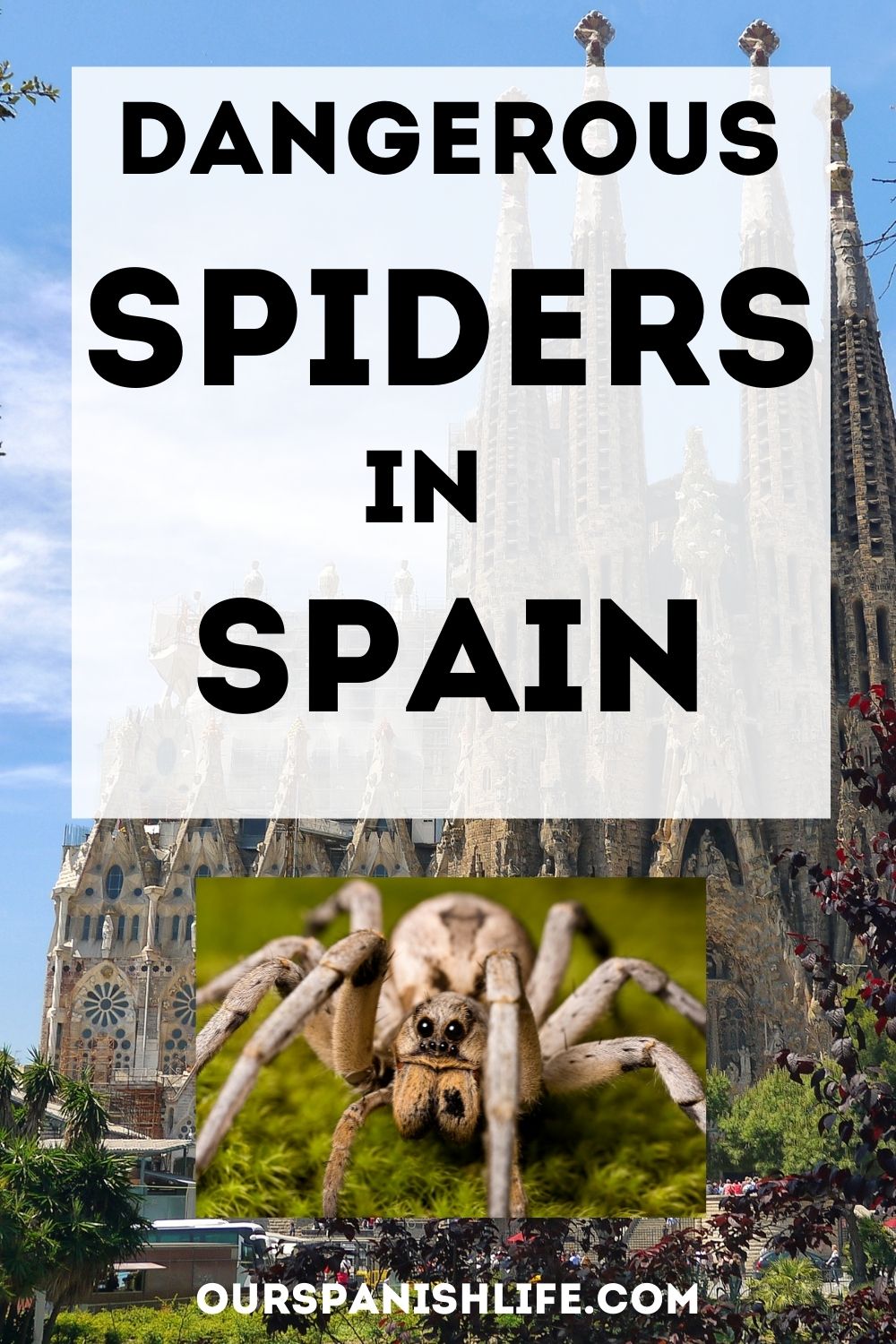If you’re an arachnophobe planning to spend time in the country, you may be wondering about dangerous spiders in Spain.
Are there poisonous spiders in Spain, and if so is there any chance of sustaining a nasty bite?
Though it’s extremely rare to suffer a serious spider bite in Spain, there are some venomous spiders that are potentially dangerous. Dangerous species include the brown recluse spider and the Mediterranean black widow, and fortunately these spiders are pretty easy to identify.
Add to that the fact that you could experience a rare allergic reaction, and it is best to be aware of which species to stay away from.
This guide will give you a brief rundown of the main ones to watch out for.
Dangerous species include the brown recluse spider and the Mediterranean black widow, and fortunately these spiders are pretty easy to identify.
While the likes of the Mediterranean tarantula, wolf spiders, huntsman spiders and the Mediterranean funnel web spider may look frightening, they are in fact relatively harmless.
A bite may be unpleasant, but no worse than a typical wasp sting.
Although jumping spiders can cause alarm due to how fast and far they can move, their bite isn’t dangerous to humans.
7 of the Most Dangerous Spiders in Spain
If you’re wondering which spiders in Spain you really need to worry about, the good news is that there are only two species of any real concern – the Brown Recluse Spider and the Mediterranean Black Widow spider.
We discuss these two dangerous Spanish spiders as well as 5 less dangerous spiders in Spain in the list below.
1. Brown recluse spider
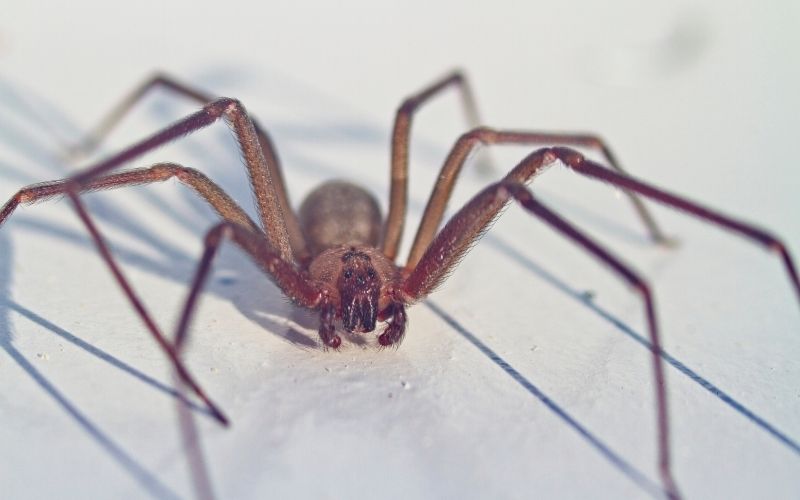
The brown recluse spider is one of the most dangerous spiders in Spain. Its venom can cause considerable damage to human skin.
This has in the past meant that surgery is required. In the extreme, limb amputation can even be necessary. If you want to avoid severe skin damage, this is a creature to stay away from.
The good news is that this spider is fairly easy to identify, thanks to violin-shaped markings on its back. These mean that it may also be called the fiddleback or violin spider. As the name suggests, it’s also brown in color.
Necrosis can be caused when a human is bitten by a brown recluse spider. This leads to the decay of the soft tissue around the wound, and this can spread.
Other unpleasant symptoms of bites from brown recluse spiders may include nausea, swelling and fever. If left untreated, organ or even respiratory failure can be the result, so it’s not one to ignore.
This is a serious spider bite that requires medical attention.
In fact, treating a bite quickly is the critical to minimizing both the long and short term effects of a brown recluse spider bite.
There is a clue to the other positive news about this spider in the name. It is indeed a reclusive species, shying away from human contact and living in unused areas – such as among boxes of stored items in a closet or attic.
Like most creatures, the brown recluse spider will defend itself if attacked, although most spider bites from this species are accidental.
If you are bitten by the Mediterranean recluse spider, call a doctor immediately to make sure you avoid long term implications.
2. Mediterranean black widow spider
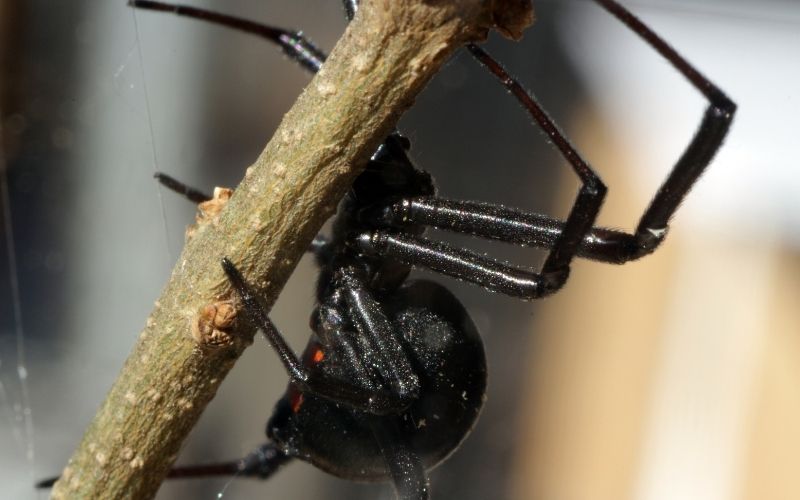
The Mediterranean black widow spider has relatives all over the world, from the Australian redback to other overseas cousins such as the black widows of North America.
In fact Antarctica is the only continent where none are present.
Black widow spider venom attacks the human body in several ways. Though it is rarely fatal, it can be if left untreated.
These Spanish black widow spider is short in body length but can be identified by the red spots on the back of the round, glossy, black body. In some cases, these may be yellow or orange instead of red.
Typical symptoms of a European black widow spider bite may include sweating, fever, nausea, cramps and joint pain.
It is particularly dangerous for victims who are very young or old.
The Mediterranean black widow spider tends to live among long grasses or on farmland, where most bites take place.
Hand-harvesting crops in certain areas thus increases the risk of being bitten by black widow spiders in Spain.
3. Mediterranean tarantula
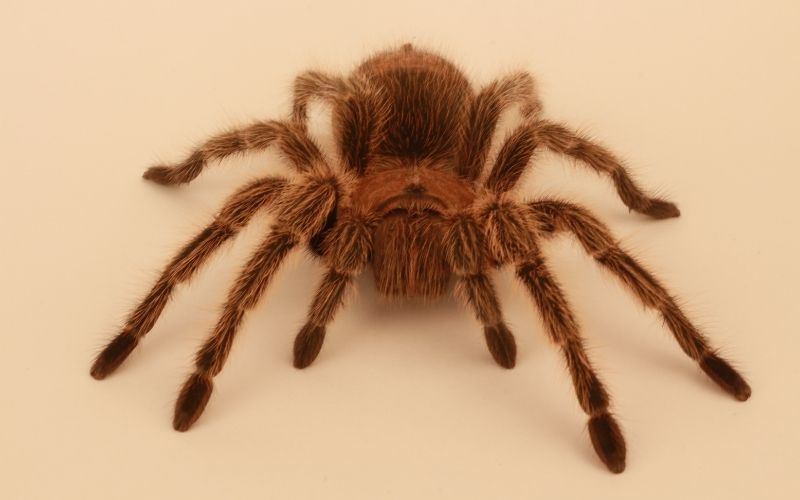
The Mediterranean tarantula is a pretty scary-looking spider, with the large body and chunky legs associated with tarantulas.
Despite its looks, it is not the most dangerous spider in Spain as the bite causes minimal symptoms in humans.
A Mediterranean tarantula bite can be painful, however, just as a bee or wasp sting can. Like fellow tarantulas is size makes it easy to spot.
With a body length of up to 30mm, it’s one of the biggest spider species you’re ever likely to see.
4. Wolf spider
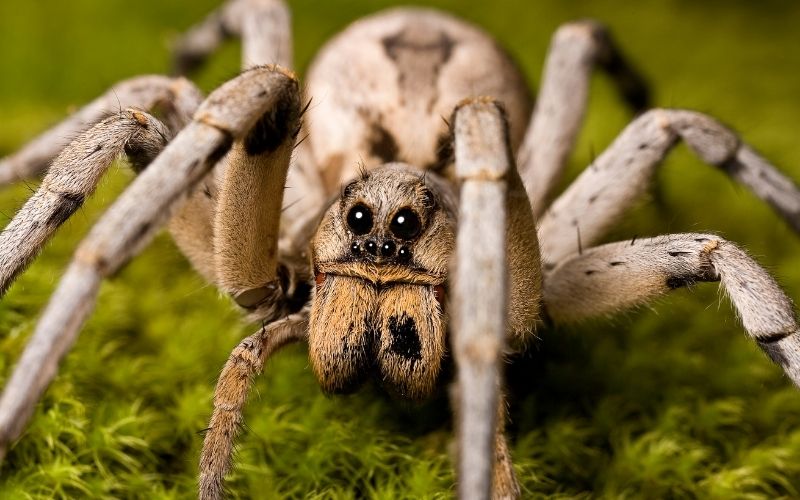
Wolf spiders are another species who are rather alarming to behold due to their size, although the good news is they are relatively harmless.
In fact in Spain they can be prized as they reduce the numbers of pests such as cockroaches, moths and other insects.
Their venom is not particularly dangerous to humans, unless you suffer a rare allergic reaction. In this case, proper treatment should always be sought.
5. Mediterranean funnel web spider
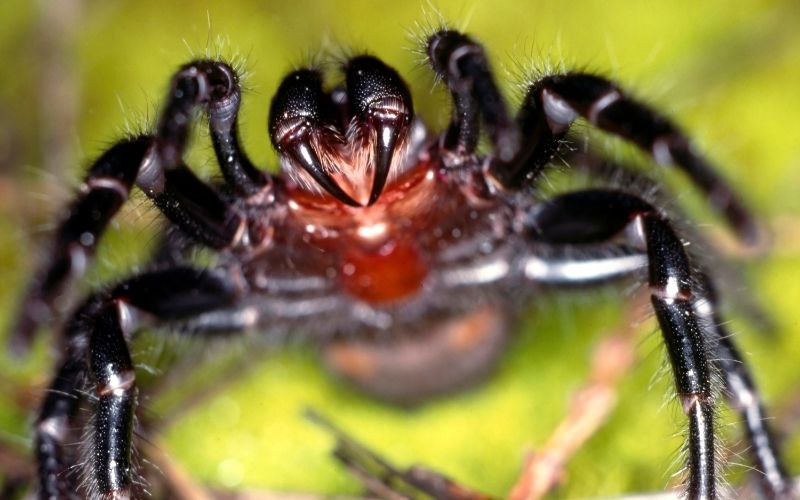
Like the tarantula and wolf spider, the fact that this species is twice the size or more than others means those who spot one may be extremely alarmed.
There’s no real need to worry though, as its venom is only truly harmful to those with an allergy to it.
Again a bite from the Mediterranean funnel web spider will feel more like a wasp sting than anything; there are more dangerous spiders in Spain than this.
In fact this is a protected spider species, so you could find yourself on the wrong side of EU law should you harm or remove one from its habitat.
This is because the protected species is in rapid decline.
6. Huntsman spider

European huntsman spiders are far smaller than their Australian counterparts: these are just little guys in comparison.
Their bites don’t tend to cause extreme pain unless the victim is attacked multiple times, which can happen when a female spider is protecting her egg sack.
Otherwise, these spiders shy away from and rarely attack humans.
Even so, swelling, minor pain and irritation tends to be the result, rather than death, long term harm or even extreme pain.
7. Jumping spider
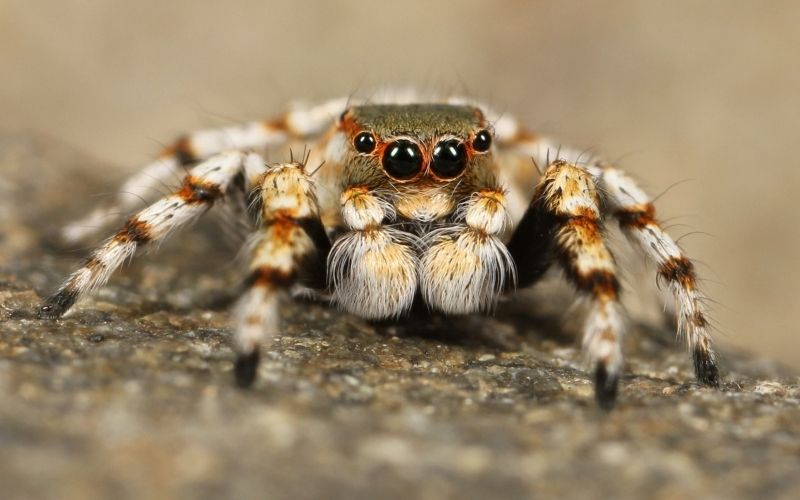
Jumping spiders are not at all harmful to humans, as symptoms similar to those caused by a mosquito bite are really the worst that can happen.
While they’re not dangerous animals, jumping spiders are often feared because of the unique way in which they move.
They can leap up to several times their own body length, and are thus very adept at catching prey.
Dangerous spiders in Spain – FAQs
What kind of spiders do they have in Spain?
Like most countries, there are many spider species in Spain. The good news, however, is that only two of these need cause you any concern – other than, of course, pure fear of eight legged creatures. The ones to watch our for are the brown recluse and the local black widow.
Which is the most dangerous spider in Spain?
Brown recluse spiders are the most dangerous species found in Spain. Venom from the brown recluse can cause skin tissue decay, and if left untreated this can lead to amputation of a limb or – in extreme cases – death. Medical advice should thus be sought immediately if bitten.
Are there other dangerous spiders in Spain?
The only other spider in Spain to be very wary of is the Mediterranean black widow. Like the other black widows found across the globe, its venom is toxic and can be dangerous, especially for those victims who are very young or old.
What is the biggest spider in Spain?
In terms of total size, the Mediterranean funnel web is the largest, measuring up to 10 centimeters. The body size of the wolf spider and the Mediterranean tarantula, meanwhile, can reach up to 3 centimeters – minus the legs.
Can you find wolf spiders in Spain?
Wolf spiders are present in Spain. Although they’re fairly large, they are also pretty harmless to humans unless an allergy develops. In fact some Spaniards rather like them as they help to control the population of other insects seen as pests!
What should I do in the event of a spider bite?
If you have a nasty bite from any spider it’s best to get checked out just to be on the safe side. There is always the chance of an allergic reaction, or that the culprit wasn’t correctly identified in the first place.
If bitten by a Mediterranean black widow or a brown recluse spider, always seek medical advice.
Dangerous spiders in Spain – Final thoughts
Are there venomous spiders in Spain? Yes – but remember that only a small few are at all harmful to humans.
Spiders also tend to shy away from human contact, so unless you’re unlucky enough not to be aware of its presence, becoming the victim of an attack is highly unlikely.
While some alarming-looking species like funnel webs, wolf spiders and tarantulas are native to Spain, only the brown recluse spider and the Mediterranean black widow pose any real threat to resident or visiting humans.
Related:
